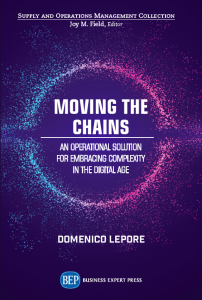
Bottlenecks are a new buzzword. This is a sad reflection of what is happening with the Coronavirus and the tragic chaos caused by the shortage of intensive care beds as well as protective equipment. Never before has it been so clear on a global level how important effective supply chains are to our wellbeing. Bottlenecks are what prevent goods and services from arriving where they are needed on time. They can be caused by many factors, like poorly designed processes, simple logistics or red tape.
When you’ve been working with the Theory of Constraints for over 20 years, as we have at Intelligent Management, it becomes a responsibility to help people understand the difference between a bottleneck – never a good thing – and a constraint as intended in the Theory of Constraints (TOC). A constraint sounds negative, but in TOC it becomes a radically effective means to achieve significantly more value from all the resources available in a systemic way.
Every system has a constraint
We can thank Dr. Eli Goldratt for developing the Theory of Constraints and showing us what a phenomenal opportunity a constraint is when it’s managed properly. Every system has a constraint. That includes your organization. This is a fact and there is no getting around this. The constraint is the element that “limits” the performance of the system towards achieving its goal. We can ignore the constraint but it won’t ignore us. But when we identify it, we have the possibility to enhance the overall performance of the entire system by using the constraint as a focusing point, by gearing all the processes to feed the constraint and keep it working to its maximum, because a minute of constraint time lost is a minute lost to the entire system.
Confusion arises about a constraint being negative when people are not aware of a constraint as a strategic choice. If we don’t make the effort to identify the constraint in our system, we will simply experience the negative effect of its limitation. However, when we make the decision to choose a constraint strategically, then we tap into a body of knowledge that can drastically improve the performance of our entire system. Think of an operating theatre in a hospital. It can only process as many operations as the surgeons are able to complete. The surgeons are the “limiting factor”. They are also the most skilled resource that provides the most “valuable” outcomes. That’s exactly the kind of constraint you want – where the most “value” is generated. If we organize everything that affects the work of the surgeon in such a way that their time is never wasted on anything except the surgery itself (eg. eliminating unnecessary paperwork or delays due to a lack of equipment), then we optimize the flow and this leads to a reduction in waiting time for surgery. In order to allow the “surgeon constraint” to work all the time, we need to add “protection capacity” everywhere else – enough nurses, enough medical supplies, enough equipment etc, so that nothing every interferes with the flow of the surgeon operating.
In other organizations, the constraint might be a machine or a pool of specialists. The important thing is that the constraint is a point that adds the most value, because you will be investing to organize the rest of the system around that constraint to keep it working constantly and to make sure it never shifts. If the constraint moves elsewhere, the effort and expense involved in redesigning the organization around a new constraint will be huge.
The constraint as whole system strategy
In TOC we choose a constraint in a strategic way. We choose a point in the system where the most value is generated and we leverage it. In other words, we make sure that the constraint is working all the time and never stops, like a heart beating inside a body, because the constraint dictates the pace with which the entire system produces units of the goal. If the constraint stops even for one minute, then the whole system loses that one minute. How do we guarantee that the constraint works all the time? By building enough protection capacity everywhere else in the system to “feed” the constraint so it never starves. Trying to make all the parts of the system “efficient” by working all the time is to misunderstand the interconnected nature of everything in the system and is precisely what creates bottlenecks. Any efforts to build a management system that sees bottlenecks as something to be “debottlenecked” completely misses the point. We can avoid the insurgence of bottlenecks and the need for whacking them only to move them somewhere else by building enough protection capacity around the constraint so that it never shifts. Choosing a constraint and organizing the system around it is the cure for bottlenecks.
How about a constraint that cannot keep up with market demand? Well, before we “elevate” the constraint (increase its capacity) we first build more capacity in the other parts of the system to prevent them from becoming unwanted bottlenecks. Ultimately, what we sell to customers is the value that the organization can generate for them and that value is originated by an organizational system focused on the constraint.
TOC comes with a “throughput world view”, not a “cost reduction worldview”. Adding necessary capacity cannot be seen as a cost. The lack of protection capacity in a system can only produce an interconnected, hence unmanageable, series of bottlenecks and de-focus people’s activity from true value generation.
Summing it up:
- A constraint is a strategic leverage point: it is the part of the system where the organization can generate the most value, as perceived by the customer.
- We avoid the insurgence of bottlenecks and the need for “whacking” them only to move them somewhere else by building enough protection capacity around the constraint so that it never shifts.
- In this way, the entire organization and its ability to generate cash through sales is interconnected through the constraint.
- The constraint becomes the focus point for decision-making, preventing fire-fighting and accelerating results.
- Any improvement efforts that are not constraint-aware are a waste of time and resources.
Here’s a quick video with an extract from our business novel ‘The Human Constraint’ on just that subject – what is a constraint? It’s narrated by the co-hosts of the Human Current Podcast.







Leave a Reply